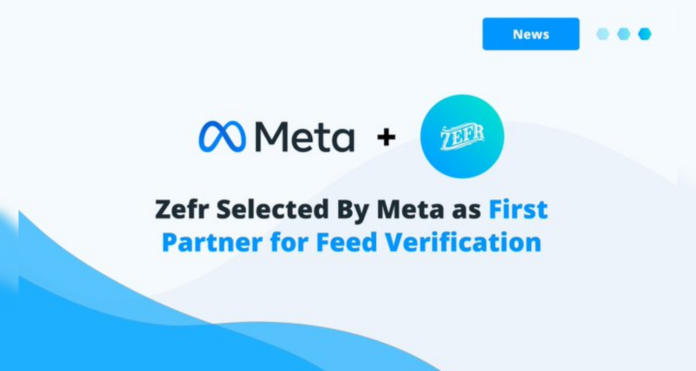Meta (previously Facebook) has teamed with Zefr, a brand sustainability platform, to ensure the proper placement of advertising on its apps. This will assist marketers in better managing their ad placements and ensuring that their advertisements are not displayed alongside potentially harmful content.
With regards to the same, Zefr has also teamed up with YouTube and TikTok. It provides a tailored and precise brand safety solution, allowing advertisers to control ad placements more precisely, by utilizing advanced AI recognition technologies that include scaled human assessment, frame-by-frame video analysis, and audio text.
‘We will enter into a partnership with Zefr developing a solution for the verification and measurement of the appropriateness of adjoining content of the ads in the Feed, starting with small scale testing in the third quarter and then moving to limited availability in the fourth quarter,’ according to Meta sources. Meta will benefit from the collaboration by developing better processes for managing ad placements, ensuring brand safety, and maximizing the value of ad placement opportunities.
Meta is also developing internal acceptability rules to give advertisers more control over their ad placements. The primary goal is the English-speaking markets, with plans to test in the second half of 2022 and to introduce more widely in the first half of 2023. Meta has begun working on new Instagram and Facebook feed controls. The technology will be expanded to encompass Video Feeds, Stories, Instagram Explore, Reels, Stories, and other areas next year, as well as other languages.
Meta offers several brand safety features, including a “publisher allow list” and “subject exclusions.” With the addition of these additional alternatives, advertisers will be able to be more exact with their ad placements, excluding those that aren’t necessary, and so reach a larger audience.
When publishers opted to take back their ads so that they could run alongside hate speech and extremist content, YouTube incurred a significant loss. It wasn’t until 2017 that the idea of brand safety tools gained traction.
Meta outlawed the placement of adverts, aside from NSFW content, in 2013 and has been working on solutions to control the situation since then. It also faced a boycott by advertisers in 2020, when concerns about the spread of disinformation and hate speech surfaced. As a result, it’s critical for Meta to focus on building these new ad placement technologies, so that the future uncertainties are put down.
Follow and connect with us on Facebook, LinkedIn & Twitter

